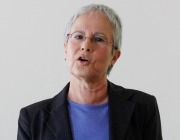Morphological ergativity is attested in all Neo-Aramaic dialects of the North-Eastern Neo-Aramaic (NENA) group, which comprises over a hundred different dialects spoken by Jewish and Christian communities originating in the border areas of Turkey/Iraq/Iran. Historically, Aramaic (Semitic) is nominative-accusative, and ergativity developed through contact with ergative Iranian languages, especially Kurdish, which is spoken by the Muslim population of the region. Ergativity developed in the perfective aspect only, and is marked by verb-agreement rather than Case. We divide NENA dialects into three types according to their degree of ergativity, reflected by differences in the distribution of the ergative marking of intransitive verbs. In dialects exhibiting the highest degree of ergativity, which we call Split-S, the ergative marker is restricted to transitive and unergative verbs, and is not found with unaccusative verbs. In a second type of dialect, which we call Dynamic-Stative, the ergative marker is also optionally found with unaccusative verbs. Dialects exhibiting the lowest degree of ergativity, Extended-Ergative, mark all intransitive subjects as ergative. This is surprising from the perspective of theories of ergativity, since it contradicts Marantz's Generalization, and suggests that ergative Case is not inherent but structural, and, specifically, that it is assigned by v and not by T. We show that the parametric variation between the different dialects reduces to the distribution of v. v is obligatory in Extended-Erg dialects, and assigns ergative Case to its argument if it has one, or to the internal argument otherwise. In Dynamic-Stative dialects, the presence of v is optional. In Split-S dialects - v is obligatorily missing: this is nevertheless compatible with verbs having an external argument, since ergative languages allow the merge of the external argument as an adjunct. (C) 2011 Elsevier B.V. All rights reserved.
